New England - October 2008
Denise and I traveled through New England during the first two weeks of October visiting family and playing tourist. The fall colors were just coming out at the beginning of our trip and gloriously peaked toward the end. We began our trip with a visit to Denise's mother, various family members, and old friends in Binghamton, New York. We moved on to discover the town founded by my 5th great-grandfather in north-west Massachusetts, Clarksburg, where we located the old family burying ground. We then spent several days in Concord soaking up its history. Finally we moved on to Lake Maranacook, Maine to visit some old high school friends of Denise who had settled there.
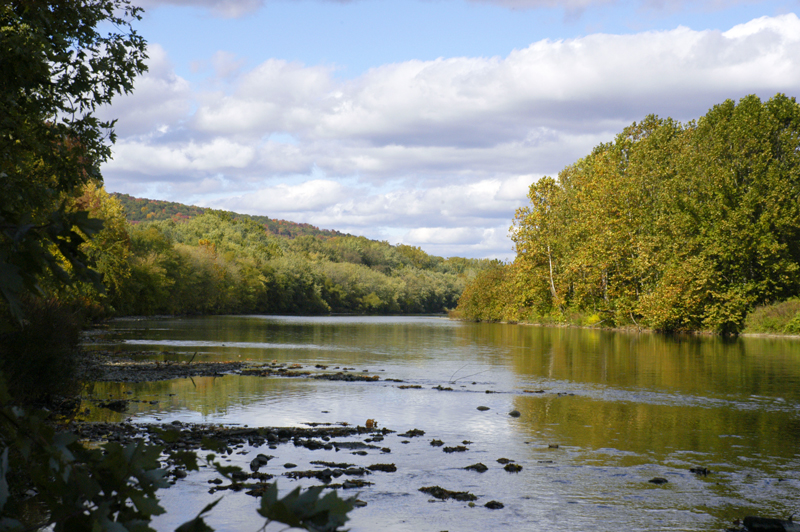
The Chenango River in Binghamton, New York. The trees are just beginning to change to their fall colors.
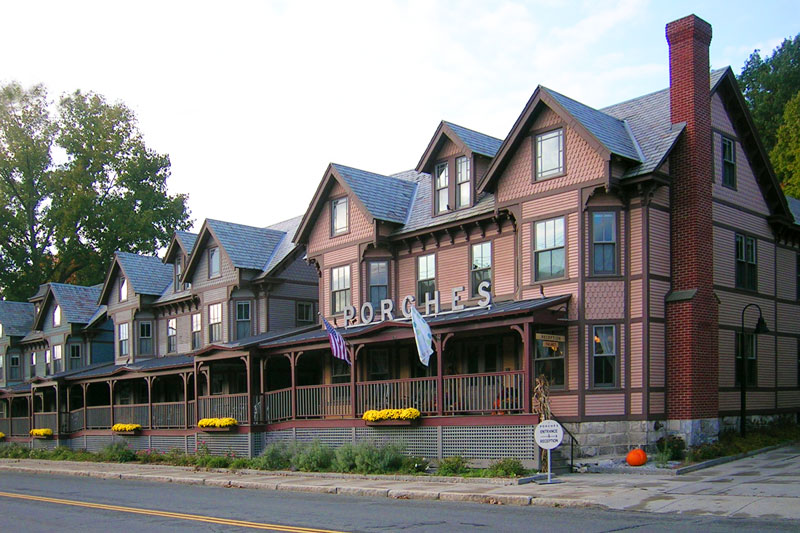
The Porches Inn in North Adams was our base of operations for the Clarksburg, Massachusetts area (http://porches.com/). The inn was lovely. Unfortunately, it has a very poor view of the Hoosic River, across the street where it is contained by ugly concrete walls (presumably a 19th century solution to a flood control) and what appears to be an abandoned red brick mill building. The abandoned red brick building turned out to be the backside of the Massachusetts Museum of Contemporary Art. That said, the inn was very comfortable and our stay was very pleasent.
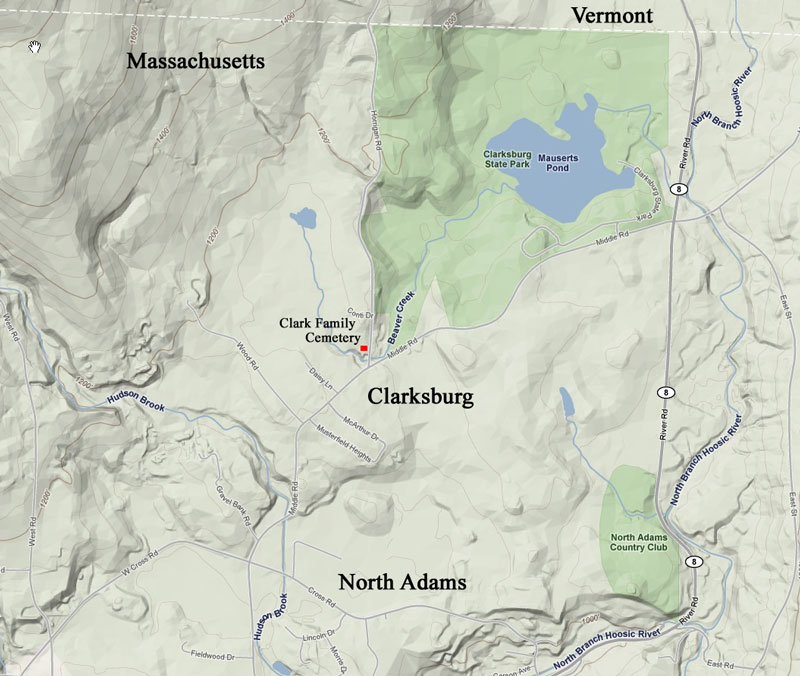
Map of Clarksburg, Massachusetts with the Clark Family Cemetery marked in red. The town was first settled in 1764, incorporated in 1798, and bears the name of my 5th great-grandfather, Nicholas Clark. It took a visit to the town hall and a discussion with the man responsible for maintaining the roads to locate the cemetery since it has not been used since 1930 and is located on private property. We were joined by a cousin of mine who lives nearby to map the cemetery and document who was buried there. http://www.clarksburgma.com/.
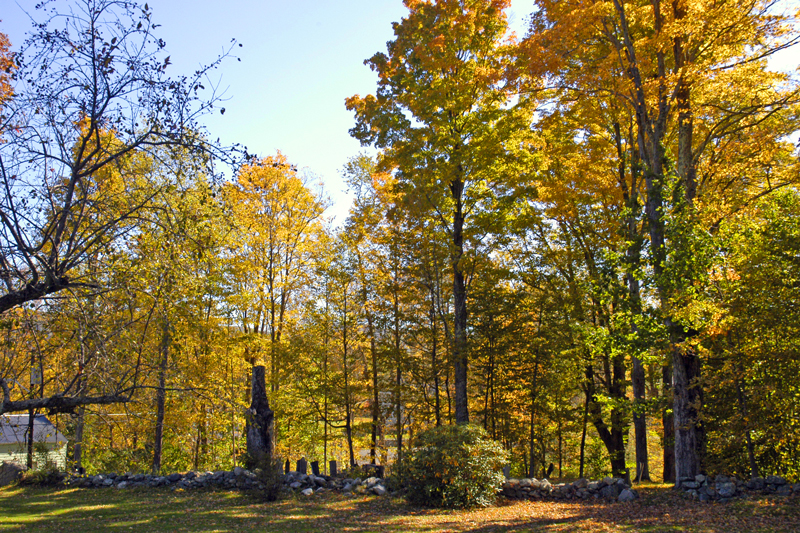
The Clark Family Cemetery in Clarksburg, Massachusetts. What remains of the old Clark homestead is across the street in the background. The Clarks were farmers and sawyers, and this is a good example of a family burying ground from a time when the dead were buried on the family property.
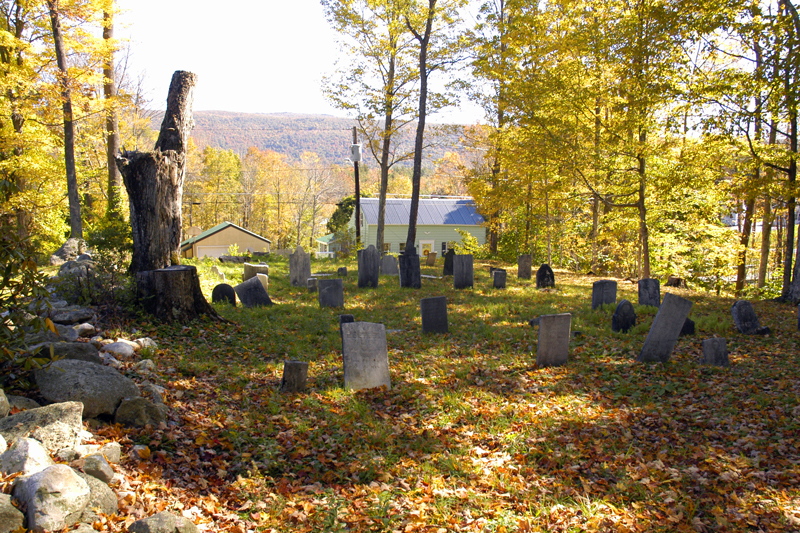
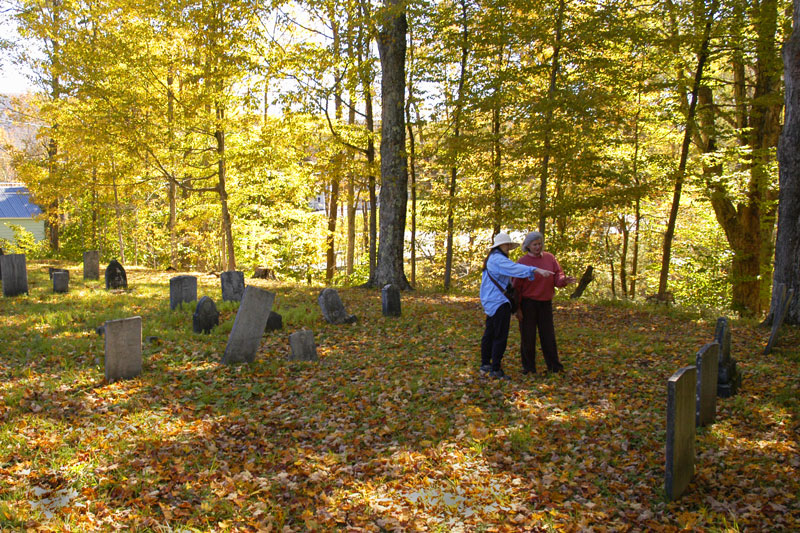
My wife and cousin examine some headstones. I was pleased to see that someone is kindly keeping the grass down, but little or no attempt is being made to preserve the tomb stones.
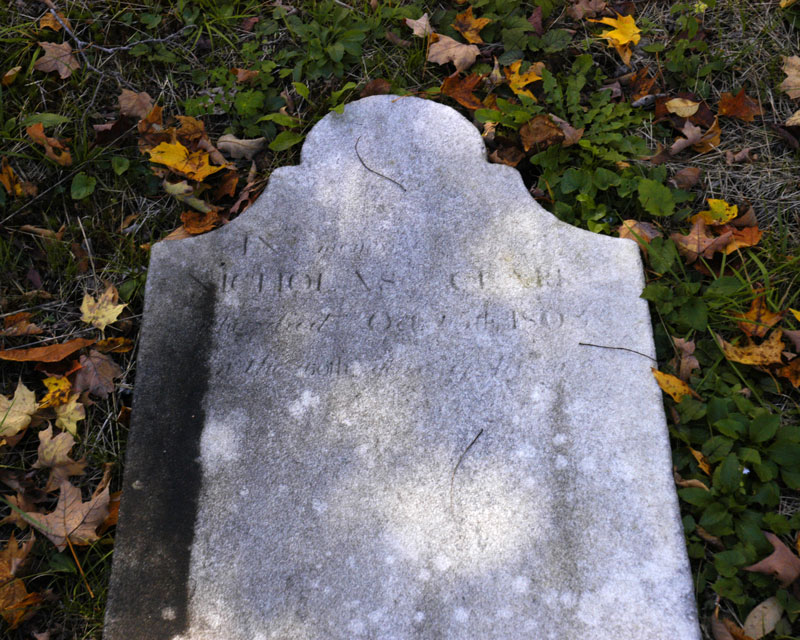
The headstone of my 5th great-grandfather unfortunately lies flat on the ground having broken off at its base. For this reason, and its age and the soft limestone used to make it, the inscription is very hard to see. It says, "Nicholas Clark died Oct. 20, 1803 in the 60th year of his age". I think it would be nice if the town of Clarksburg would do something to protect the tomb stone of its namesake. I'm working on that.
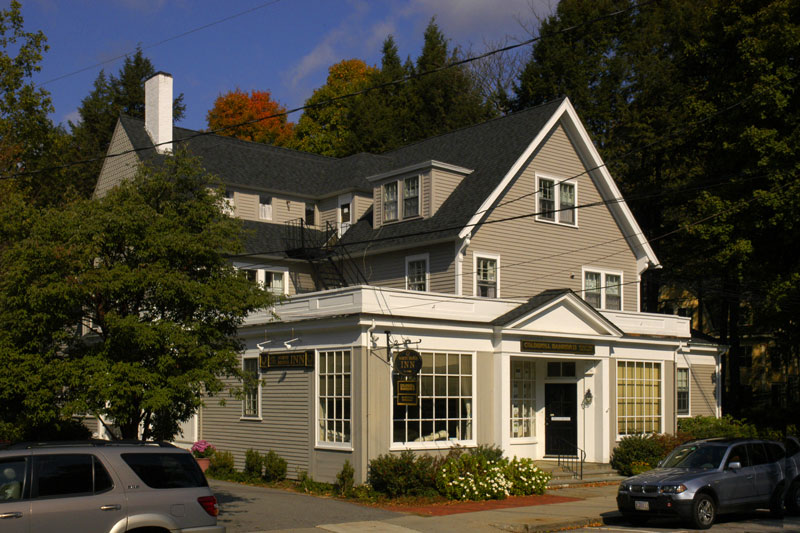
Our accommodations in Concord, the historic North Bridge Inn (http://www.northbridgeinn.com/). Very quaint, but unfortunately it is fronted by a real estate firm and phone/power lines further detract from its architectural interest. The traffic was also miserable during the rush hours and the stench of automobile exhaust was intense at times. Concord is now a bedroom community of Boston.

Across the street from our inn is the Old Hill Burying Ground. Concordians, being a practical people and not inclined to waste space, buried their dead right up the back doors of the homes situated at the edge of the cemetery. From the placement of the headstones, I believe there are people buried below the back porch of the red brick home left of center.
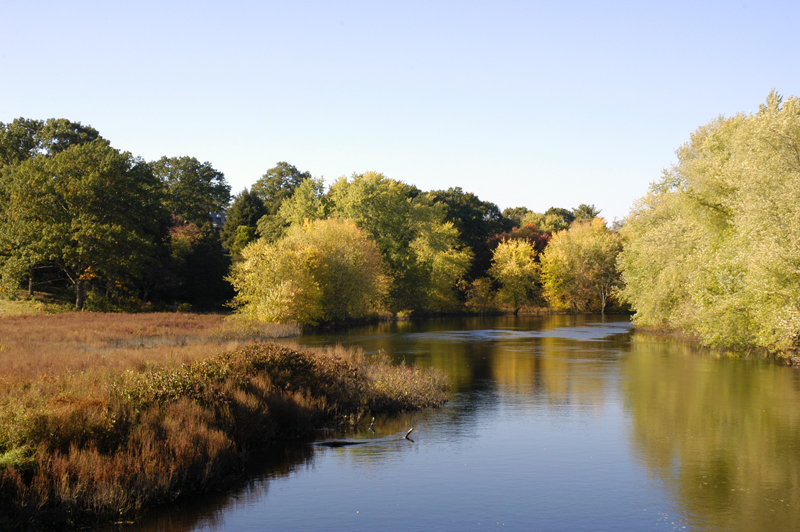
The Concord River from the North Bridge in Concord, Massachusetts.
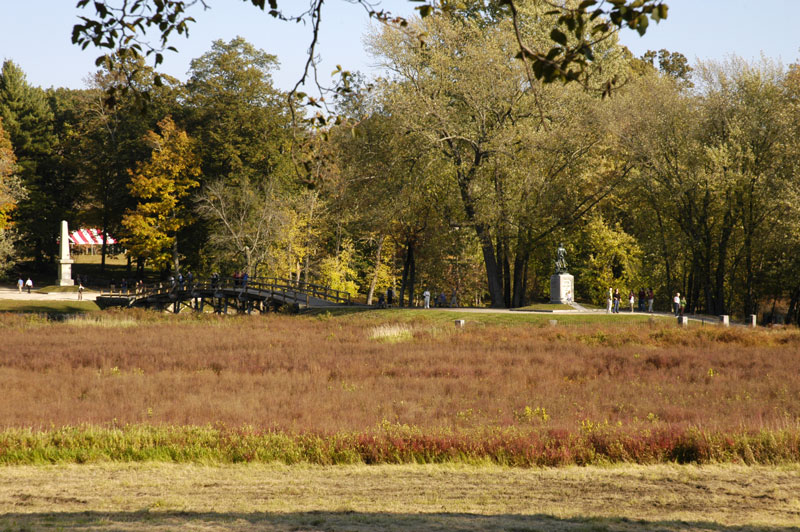
The famous North Bridge that crosses the Concord River and the Minute Man Statue as seen from the visitor center. Inscribed on the base of the statue are following words by Emerson: "By the rude bridge that arched the flood/Their flag to April's breeze unfurled,/Here once the embattled farmers stood,/And fired the shot heard round the world.", inspired by the famous battle fought on April 19, 1775 that began the American Revolutionary War.
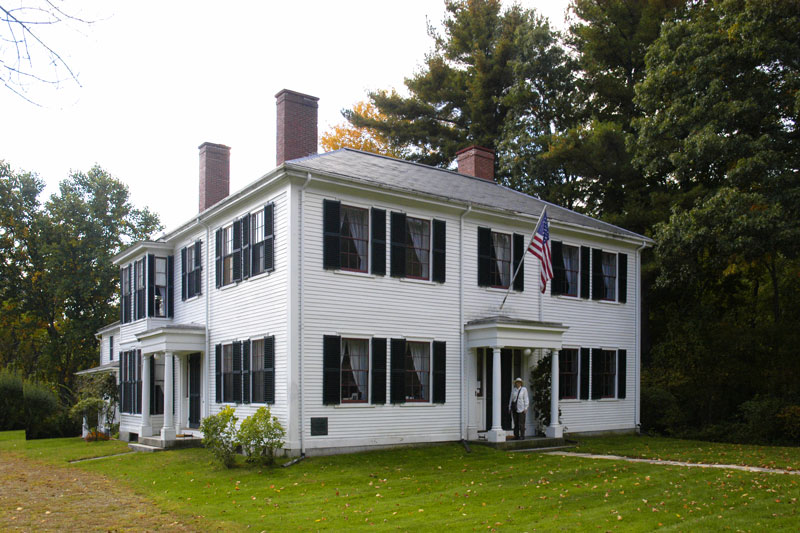
The Ralph Waldo Emerson house on the Cambridge Turnpike in Concord (http://www.rwe.org/). Denise stands at the front door.

Walden Pond, Concord, Massachusetts, that so inspired Henry David Thoreau.
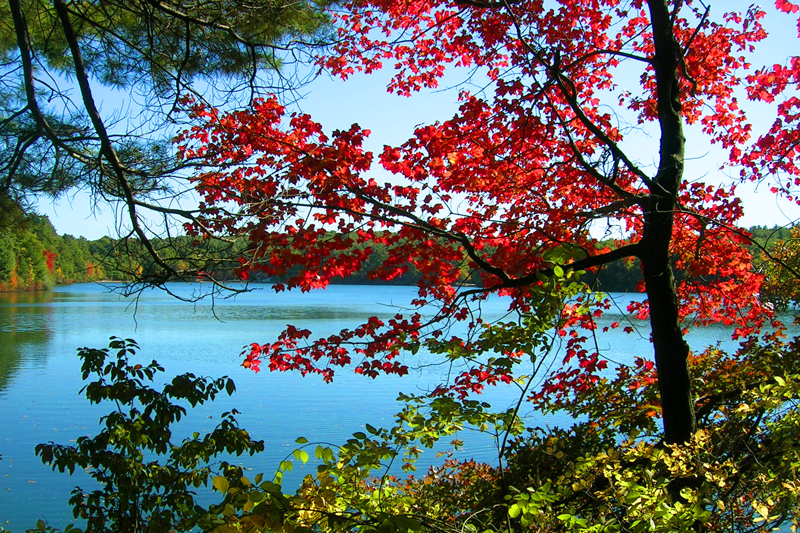
Fall colors on Walden Pond. This image was taken by Denise.
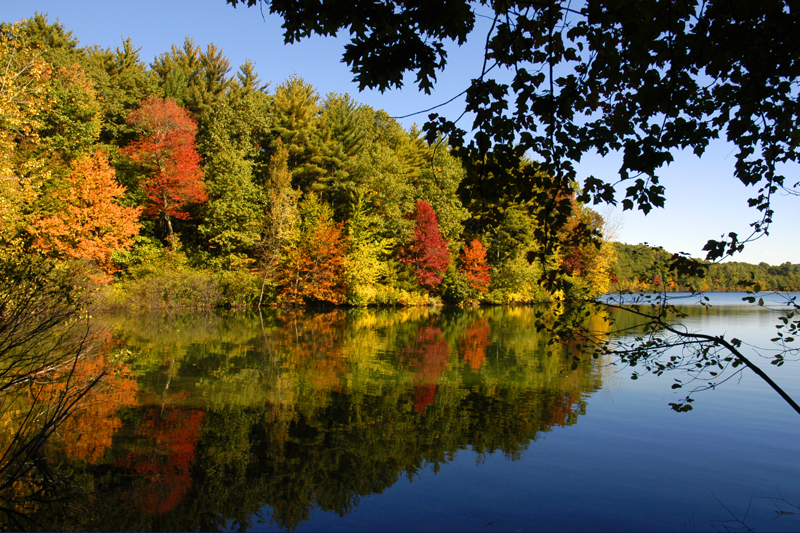
More fall colors on Walden Pond.
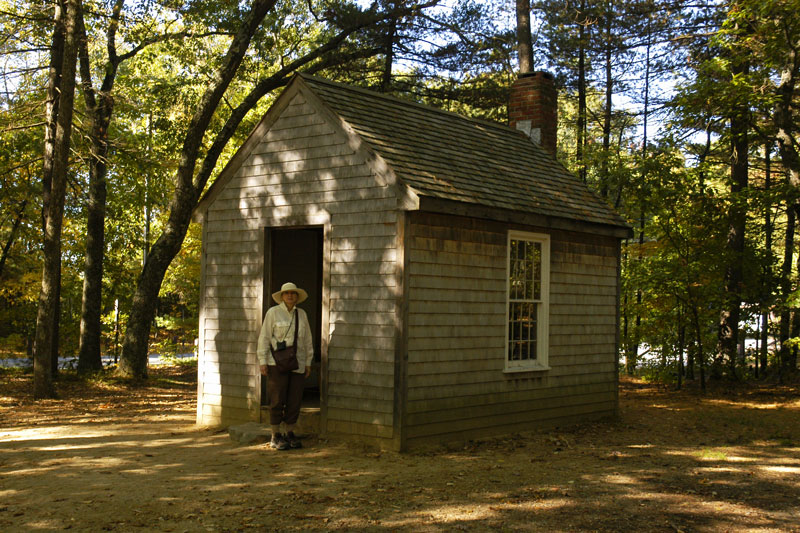
A reproduction of the 10'x15' cabin that Henry David Thoreau built and lived in from July 4, 1845 to mid-1847. Thoreau's most famous book, Walden, was inspired by his stay here. The day we visited Walden Pond, there were very few people, being the off season, and we walked around the lake encountering no more than half a dozen. But the crowds of swimmers and boaters can be quite large during the summer, which would surely make Thoreau weep if he were alive now. http://thoreausociety.org/.
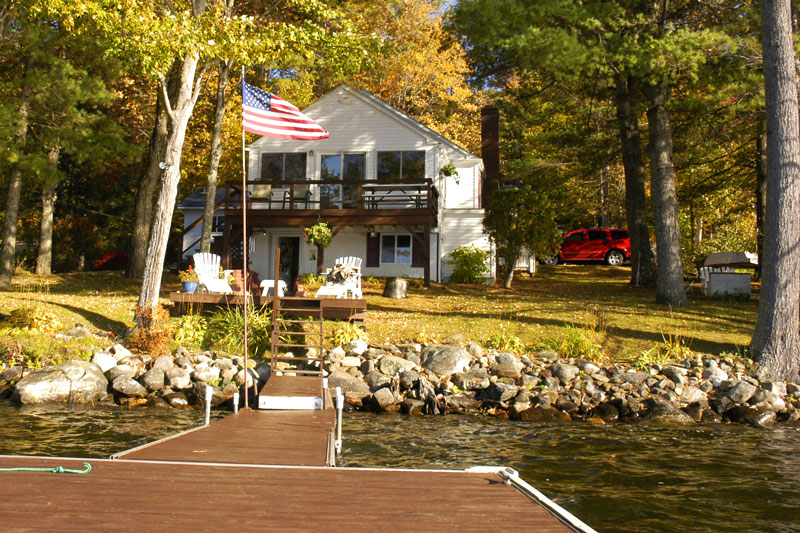
After our wonderful stay at Concord we drove to Lake Maranacook, Maine to stay with some high school friends of Denise who have a delightful home right on the lake.
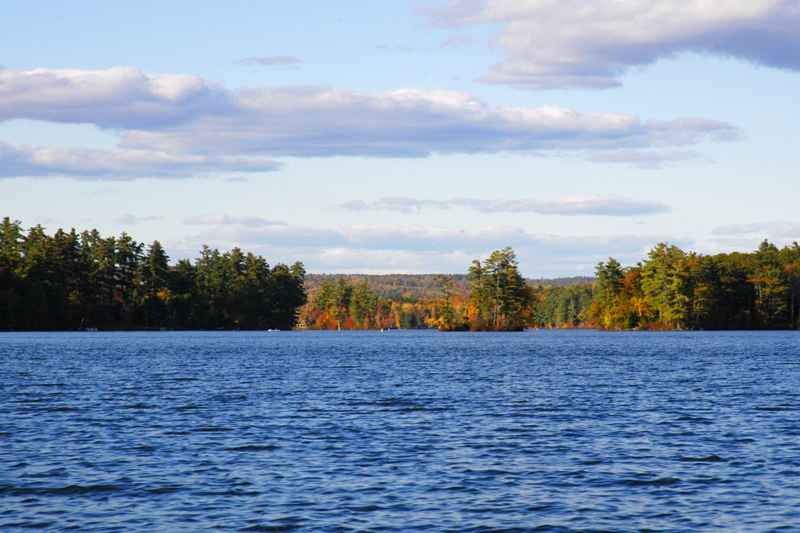
The fall colors on Lake Maranacook were spectacular.
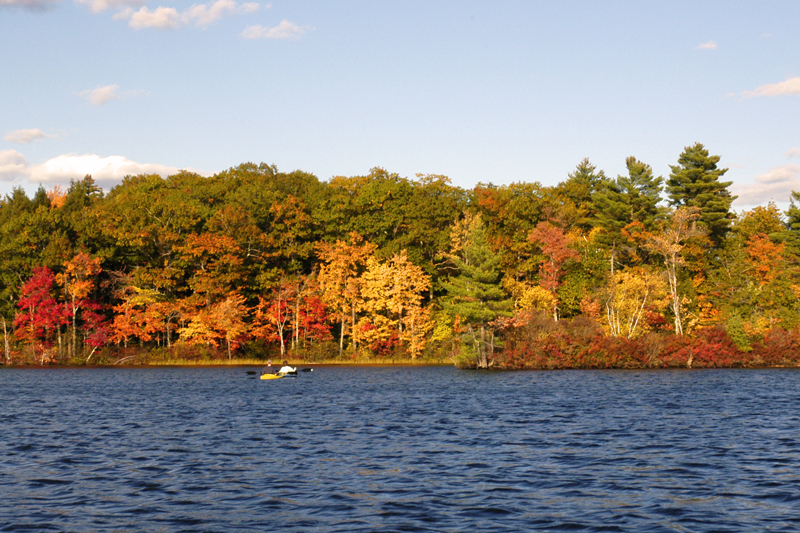
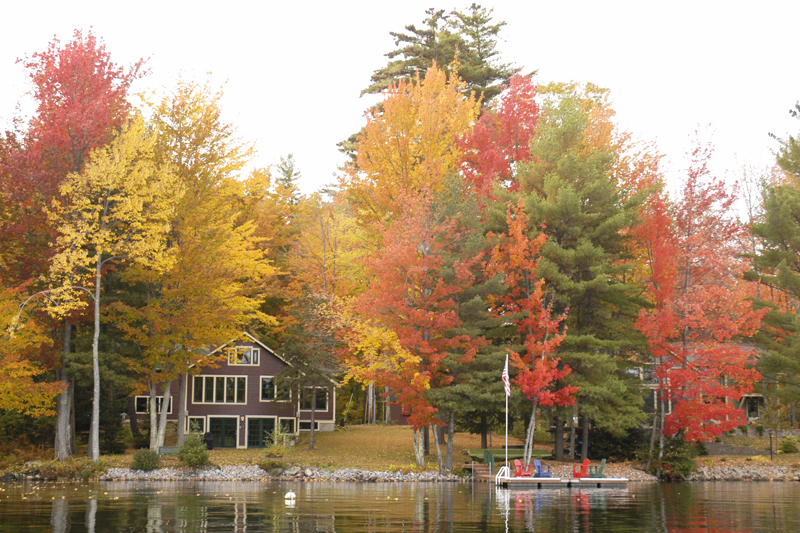
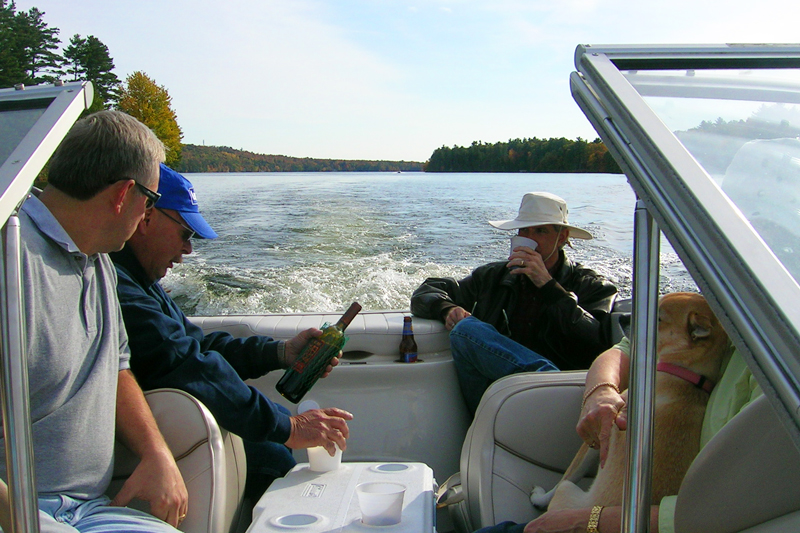
Drinking and driving on Lake Maranacook after a long afternoon looking at the fall colors and exploring the lake.
The family and old friends that we visited made us feel at home and made our trip very special. Here are pictures of a few.
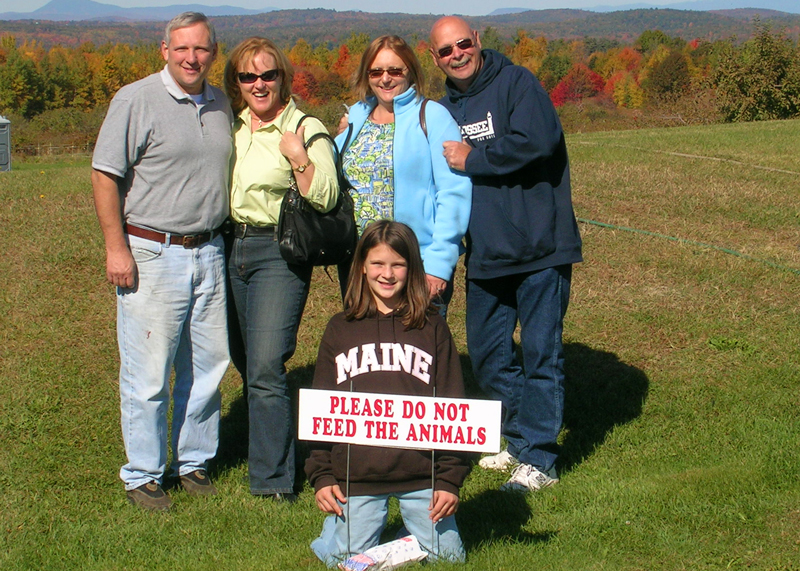
Our hosts on Lake Maranacook Dave and Debbie (on the left) and old high school friends of Denise's, Debbie and Bob (on the right), and their daughter, Kate.
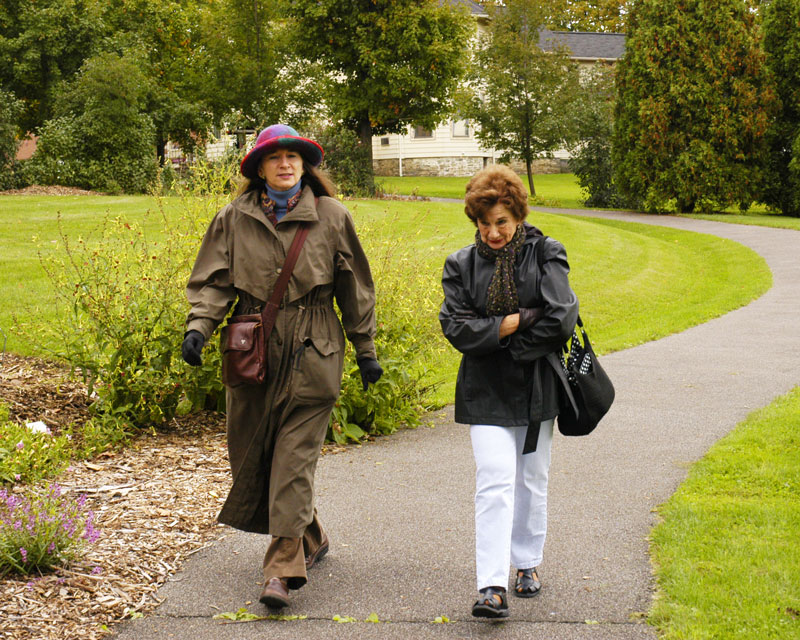
Denise and her mother, Annie.
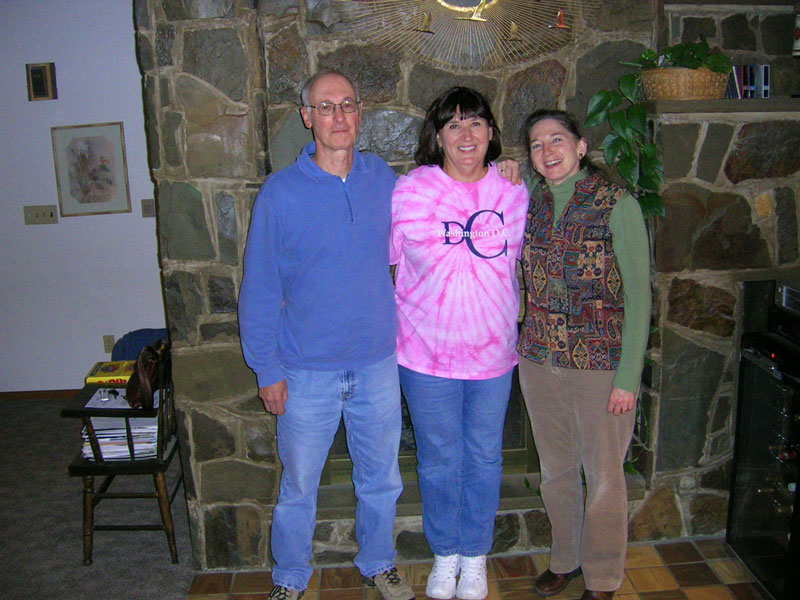
Denise and cousin Judy and her husband, Tom.
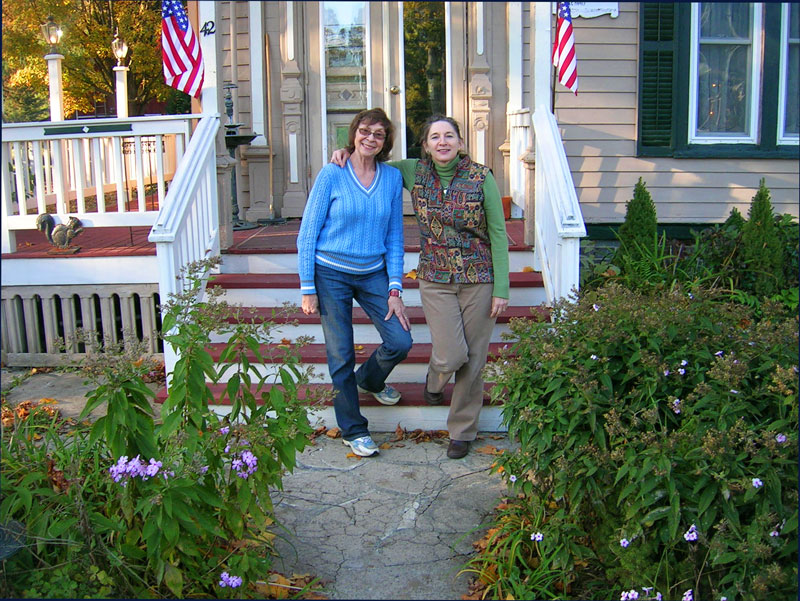
Denise and her cousin Sandy, in front of her historic mid-19th century home.
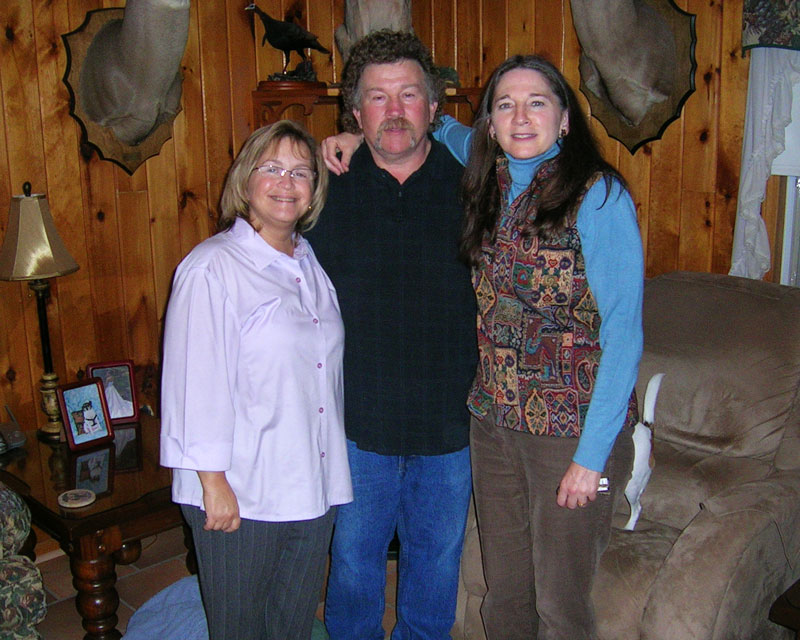
Denise and two old high school friends, Debbie and Tim.

My Massachusetts cousin, Jeanne, who enjoys exploring old cemeteries as much as I do.
